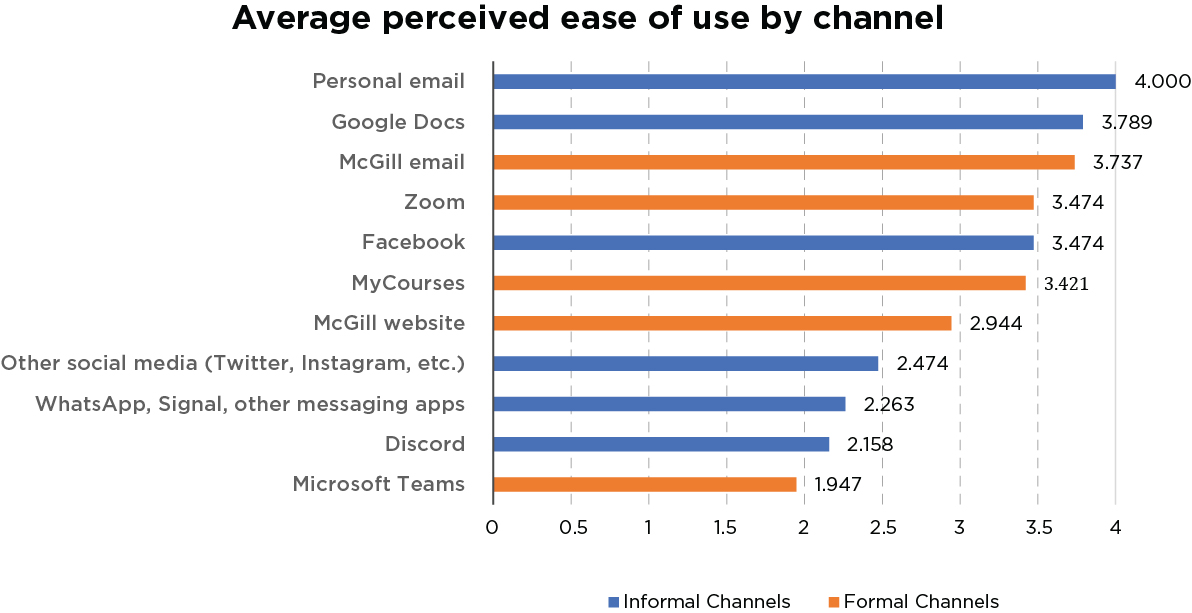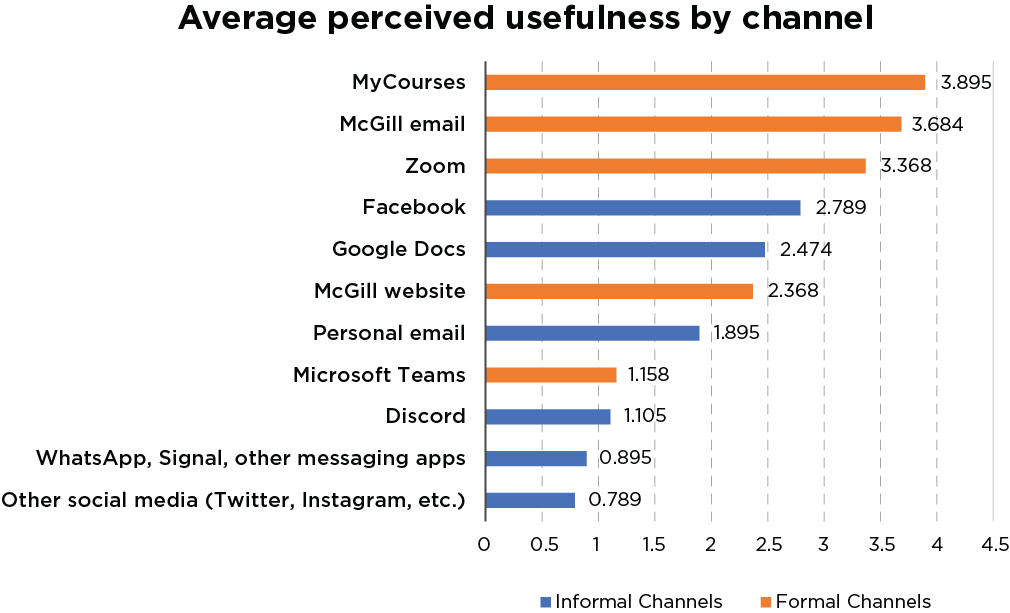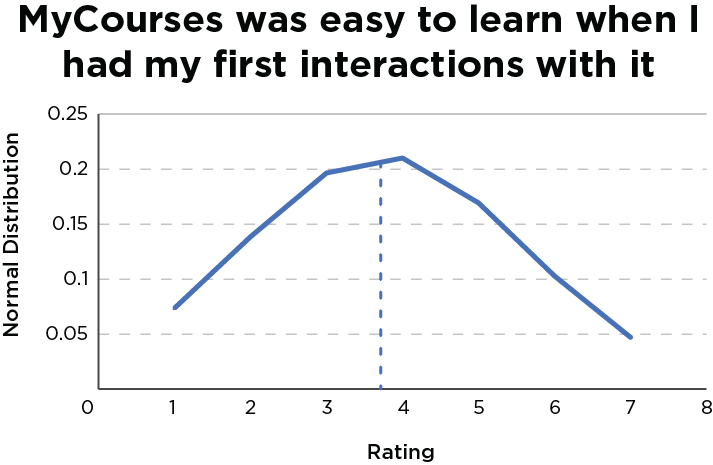UX, Data & Research
Perceived usefulness and ease of use of academic communication channels during the COVID pandemic.
Read the full report.
During the COVID19 pandemic, not only workers were sent home to work remotely, but students in higher education were also forced to adjust to a fully remote learning environment. With faculty members and students needing to learn new tools and ways to communicate with each other and among themselves, a research question arises: how effective and easy to use are these tools? This study investigated master's students' perceptions of the communication channels available to them during the pandemic.
Research Questions:
To understand student's perceptions towards the formal and informal communication channels available to them (respectively, channels offered by the institution - such as McGill’s MyCourses and email - and channels external to the institution- social media, for example), six research questions were posed:
1. What are the preferred formal and informal online communication channels among master’s students?
2. How do master’s students’ perceptions of usefulness towards formal communication channels compare to their perceptions of usefulness towards informal communication channels?
3. How do master’s students rate the ease of use of formal communication channels compared to informal communication channels?
4. How have formal and informal online communication channels affected master's students’ feelings about their academic experience in a remote learning environment?
5. How do master's students feel that the formal channels offered by their university hinder or facilitate the process of communication with their peers?
6. How do master's students feel that the formal channels offered by their university hinder or facilitate the process of communication with their instructors?
Methods:
These questions were answered via semi-structured interviews and a survey comprised of 23 questions. The survey’s questions were based in part on the Technology Acceptance Model (TAM) originally proposed by Fred Davis.
Three master's students participated in the interviews and 19 master's students answered the survey All students were from McGill University. The qualitative interview data was analyzed with a thematic analysis method and the quantitative data from the survey was processed via standard statistical methods.
Results and conclusion:
The results of the study (see below) showed that students perceive both formal and informal channels as easy to use. Formal channels exhibited a higher degree of usefulness and also a higher degree of usage by students. While formal channels are perceived as useful for finding information and receiving updates about courses and for communicating with professors, informal channels are preferred for communicating with peers. The university learning management system is not perceived as a good tool for student-to-student communication and students reported a loss of the sense of community normally present in an in-person learning environment (this was in accordance with the literature review other studies’ results).
Although higher education has now returned to in-person classes, the growing volume of online education being offered (via MOOCs or otherwise) could still benefit from the insights acquired by this study. The main two insights being that (1) universities need to identify and implement ways to incorporate the missing social aspect of learning into remote learning and (2) learning management systems (LMS) should improve their communication tools to foster better student-to-student interactions.
Survey Results:





Results for “Perceived Ease of Use” of McGill’s MyCourses:



Results for “Perceived Usefulness” of McGill’s MyCourse:



The semi-structured interviews resulted in the identification of a few main themes:• Remote learning made it difficult to connect with other students.
• The in-person experience is fundamentally different from the remote learning experience and cannot be fully recreated.
• Formal tools are useful because they are available to all students.
• Reluctance to use MyCourses to communicate with other students.
• Remote learning has led to difficulty in forming new groups for group projects.
• Email & Zoom facilitate efficient student-student communication.
• McGill email and teleconferencing channels facilitate communication with instructors.


